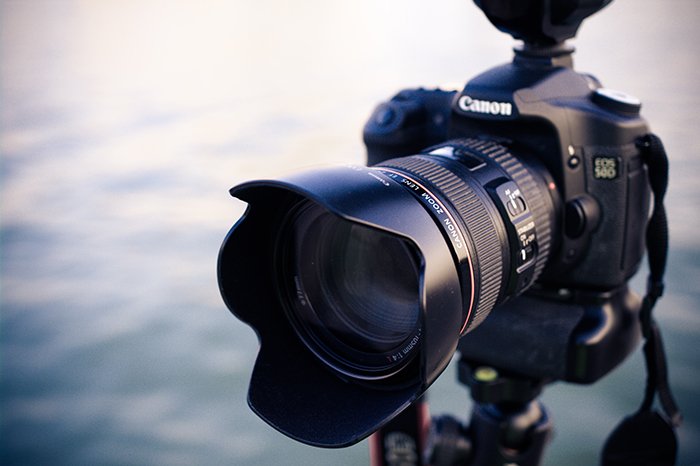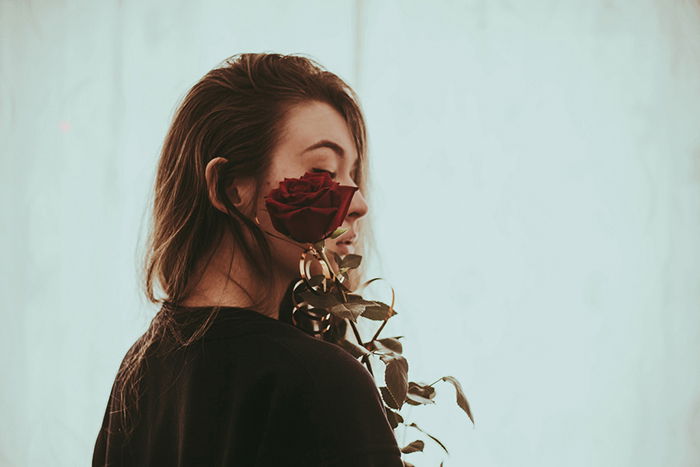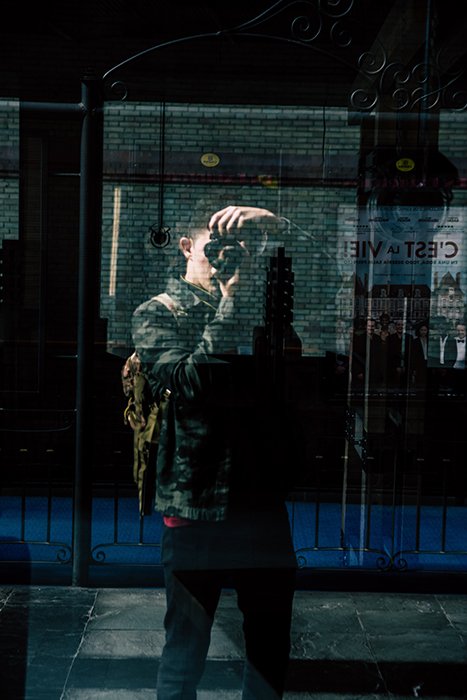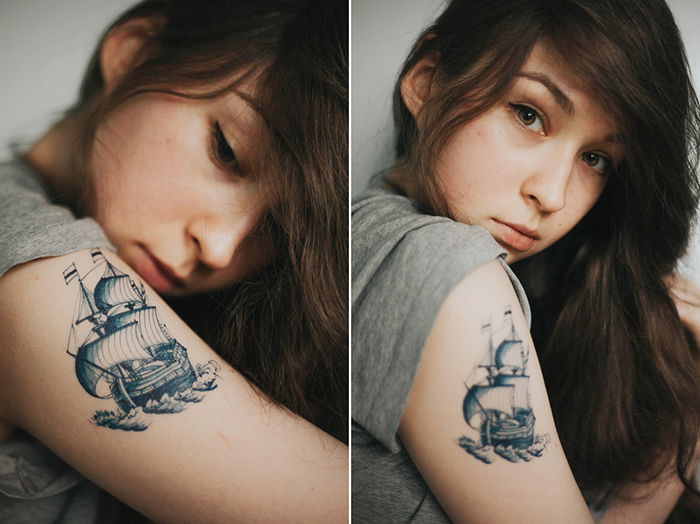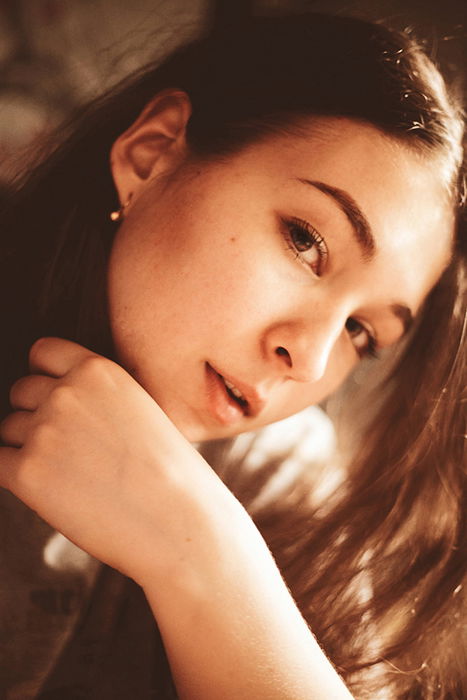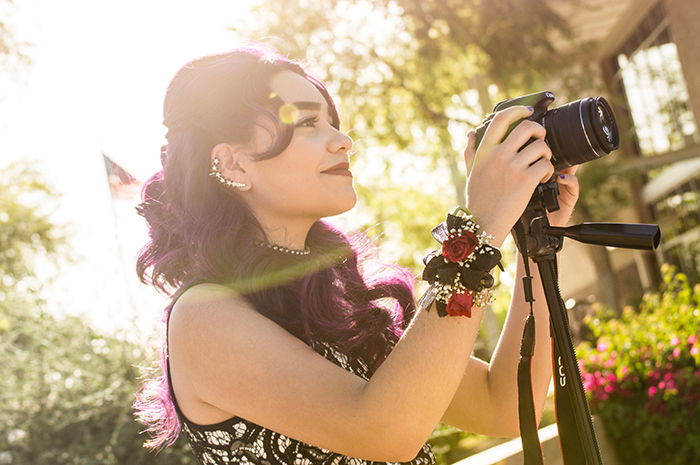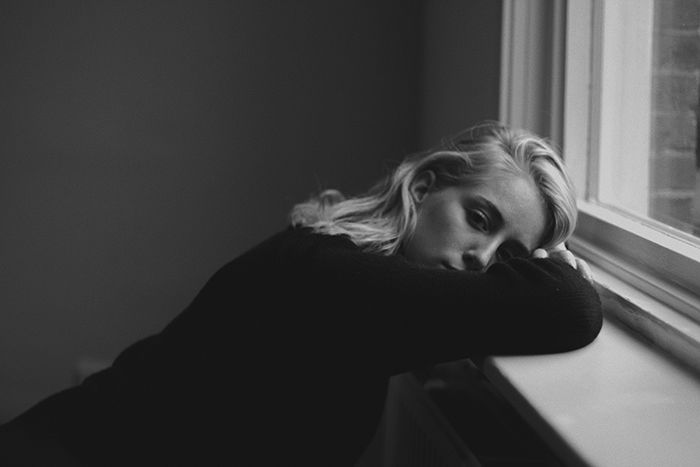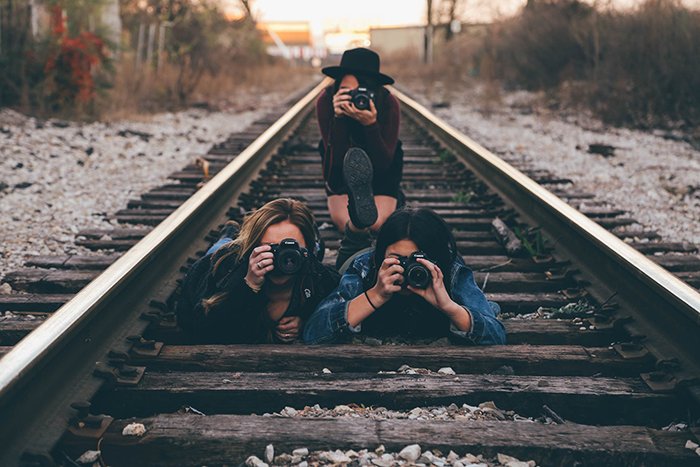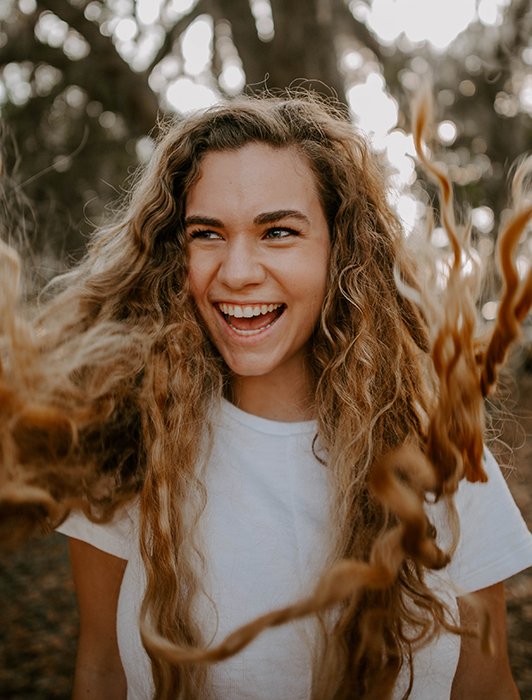1. Self Portrait Photography: Not Using the Autofocus Feature
When I started taking self portraits, I had no choice but to use manual focus. While running back and forth was great exercise, it drained a lot of my creative energy. Had I not been so preoccupied with my self-timer, I would’ve poured more energy into my ideas. There’s nothing wrong with manual focus, but it can get problematic if you want to save time and energy. Unless you’re taking photos in a place filled with busy foregrounds, stick to autofocus. Most of today’s cameras have an autofocus feature that you can use either with a self-timer or a remote. I recommend using the latter for self portrait photography forthese reasons:
You won’t have to run back to your camera after every shot; It’s compatible with almost every camera; and It’s affordable and long-lasting (I’ve been using mine for over 4 years!)
Occasionally using the autofocus feature will allow you to focus on the creative side of your photoshoot without having to deal with stressful running, technical problems, or blurry results.
2. Not Being Aware of Compositions
An appealing composition will make your self portraits stand out. This doesn’t mean you have to model directly in front of the camera. Feel free to experiment with different angles and positions. The more creative you are, the better. However, be aware of the technical issues that might arise in the process. Will your camera know what to focus on? Will the results look odd or visually appealing? If you don’t stand in the right place, your camera won’t be able to find you. To avoid this, place an object on a desired spot, return to your camera, and look at the results. Imagine yourself standing in the place of that item. Would your pose enhance the composition? This is an easier alternative to posing, testing, and constantly going back and forth. If you’re planning to use autofocus, make sure you adjust your autofocus (AF) points. This is also known as manual AF selection. AF selection will help you focus on one particular point in your frame, which your camera will prioritise when you press the shutter. Typically, self portrait photographers select just a few points in one area.
3. Fearing Judgment
With the rise of social media and its openness to selfies, self portrait photography is no longer a reason to criticise someone. When I first started taking self portraits, this was definitely not the case. When I first got into photography, it was acceptable to judge someone for liking portraiture. Worse, it was more than okay to give these people a label: vain. Because of my experience with criticism of this sort, I want to emphasise the importance of art vs. vanity. If you find value and beauty in self portrait photography, don’t be afraid of embracing it. If you don’t want to be recognised, transform yourself with the help of makeup, wigs, and costumes. Either way, you have every right to experiment and evolve as an artist. Self portrait photography has taught me the importance of being patient, feeling comfortable in my skin, and independently solving problems. In addition to being a form of self-respect, it’s an opportunity to get to know yourself better. So if you ever receive unnecessary criticism, know that it’s simply a reflection of someone else’s closed-mindedness.
4. Sticking to the Same Angles and Expressions
In the photography world, sticking to one look is a universal mistake. While it’s definitely comforting to have angles and expressions you’re confident in, you must experiment in order to grow. I used to look in the same direction in my self portrait ideas. It was an appealing angle that made me feel confident in front of the camera. I was completely unaware of it, though! When it was finally pointed out to me, I was able to move on and find new angles that I loved even more. This doesn’t mean you have to use poses or expressions that make you feel uncomfortable. You don’t have to reveal your insecurities if you don’t want to. Just remember to get out of your comfort zone, find new ways of modelling, and use them in your future work. (Also, it never hurts to ask for honest feedback.)
5. Trying to Attain Perfection
Typically, self portrait shoots are independent projects. They rarely involve other people (I’ll talk more about this later), which can result in boredom, low self-esteem, and indecisiveness. When you’re not sure about how you look, no one’s there to give you a second opinion. When you’re tired of experimenting, no one’s there to cheer you on. As a result, you might make impulsive decisions and feel bad about yourself. To avoid this, don’t seek perfection. Don’t instantly delete photos that you find unattractive. Instead, remove all the blurry photos and leave the rest. Refresh your mind with new activities and return to your photos when you’re ready. Even a few hours of distractions will give you a new perspective and help you wisely pick the best self portraits.
6. Avoiding Artificial Light
Artificial light is often associated with harshness and unflattering features. If used the wrong way, it will definitely give you unimpressive results. If you learn how to manipulate it, however, it will become your best friend on days when you can’t depend on natural light. I try to use natural light as much as possible, but I also believe in the power of artificial light. There’s so much you can do with accessible objects like lamps, torches, and even your phone. Here’s why they’re worth using in your self-portraits:
They don’t have a time limit. Natural light depends on location and time, but artificial light is always available. This means you can experiment as much as you like; and Their intensity can be controlled with the help of materials. If a light is too harsh, cover it with something that won’t burn. Alternatively, make beautiful shadows with it!
Artificial light is very handy in self portrait photography because it demands a lot of patience. If you experimented with it while photographing someone else, you’d feel much more pressured to get the perfect shot. Without any models, you’ll have all the time you need to create the best possible masterpieces.
7. Not Using a Tripod
When you take self portraits, prioritise safety. Don’t put your camera at risk by placing it on unreliable platforms. Instead, invest in a tripod. When looking for good tripods, pay attention to sturdiness. My first tripod was quite shaky and couldn’t hold my heavy camera as gracefully as I wanted it to. Because of this, there were a couple of terrifying accidents that compelled me to invest in a reliable piece of equipment. I highly recommend investing in a flexible tripod, too. With a tripod that can be placed almost anywhere, you’ll be able to play with unique points of view, compositions, and poses. Having two tripods will enhance your creativity in multiple ways. You’ll have a normal tripod for classic self-portraits, and a flexible one for unique works of art.
8. Shooting for Hours at a Time
Self portrait ideas can be a playground filled with infinite possibilities, but it has its limits. The most important limit is energy, without which you’ll feel very impatient, irritated, and low. If you use your tripod and stick to autofocus, you’ll have more energy to focus on posing and photographing. However, use your extra time wisely. No matter how difficult a photoshoot gets, take breaks. Make sure you keep yourself happy and hydrated, especially if you’re outdoors. Regardless of the circumstances, prioritise self-care. If you find yourself getting discouraged and irritated, call it a day. Taking more photos in a bad state won’t lead to productive results. Here’s an example from my own life: when I was around thirteen years old, I came up with a very ambitious self-portrait idea. Inspired by my favourite photographer, I planned a complicated indoor shoot. What I failed to consider was my camera (5 megapixels), which couldn’t possibly give me the results I wanted. After hours of hard work, I gave up on both my project and my skills. This lack of experience taught me the importance of taking things slow. Get as excited as you want about your ideas, but don’t expect them to bloom immediately. Most importantly, remember that taking care of yourself will give you the best results.
9. Not Asking for Assistance
Self portrait photography doesn’t always have to be faced alone. If you find a task difficult, ask for help. This doesn’t mean you should ask someone to take photos for you. It just means that you should have someone who will make the photographic process significantly easier. In addition to this, you might inspire your assistant to take photos themselves! Close friends and family can be incredible helpers. They can carry your equipment, hold a light source, or be on the lookout for potential disasters. They can also keep you company, give you feedback, and encourage you. If you’re going to visit a new location, especially if it’s abandoned, make sure you bring a friend (and a tripod). Again, better safe than sorry.
10. Posing All the Time
Posing is stressful, it’s true. No matter how many self-portraits I’ve taken, I always feel awkward at the beginning of every shoot. It’s completely normal to feel out of place when trying to express yourself, so let it go and embrace spontaneity. Try to take photos when you’re in the middle of doing something, like turning, moving, jumping, dancing, etc. Press the shutter when something unexpected happens. If you have someone with you, talk to them while taking photos. The results will serve as beautiful, candid pieces in your gallery. As you do these things, you’ll start to feel more comfortable in front of the camera. After that, posing will come naturally to you.
Conclusion
All of these mistakes have made me stronger as an artist, but I believe they shouldn’t be repeated all the time. Creative mistakes are nothing to be embarrassed about. Don’t be afraid of discovering your own unique flaws and finding solutions for them. If you keep these self portrait photography tips in mind during your next shoot, you’ll have ten less things to worry about. You’ll have more energy and support. You’ll be more open to working with different kinds of light and discovering new locations. Most importantly, you’ll have the kind of mindset that will make your photos bloom.
